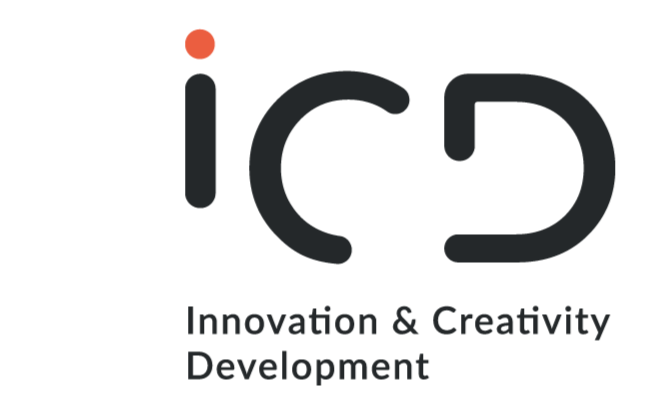
Many ideas fail not because they’re bad, but because they encounter internal processes that reject them or generate strong resistance. Often, these barriers are unconscious, rooted deep in the existing corporate culture.
That’s why systematic innovation can only truly develop within an Innovation Culture that actively promotes creativity.
What are the pillars of an innovation culture?
Corporate Culture vs. Innovation Culture
Corporate culture shapes how professionals relate and act within a company and defines its outward identity. It becomes visible through shared values, norms, attitudes, and paradigms among employees.
In contrast, an Innovation Culture is a specific type of corporate culture whose main purpose is to foster the development of innovations within the organization. Since innovation processes are often cross-functional, the innovation culture serves as a transversal layer of shared norms and values, supported by everyone involved in the process.
A positive innovation culture creates incentives for employees and significantly boosts the company’s innovative strength.
The Three Dimensions of an Innovation Culture
A company’s innovation activity largely depends on nurturing a culture that embraces:
- Ability – the capacity to innovate
- Willingness – the motivation to innovate
- Opportunity – the potential and conditions to innovate
These three dimensions are interconnected and mutually reinforcing. For example, the willingness to innovate is influenced by the other two: ability and opportunity. A change in any of these dimensions often triggers changes in the others.
Ideas can only efficiently turn into real innovations when there are clear frameworks and conditions that develop all three: ability, willingness, and opportunity.
1. Ability – Capacity to innovate
To generate ideas and turn them into sustainable innovations, employees need support in developing and applying their creative potential. This involves both leadership that encourages innovation and enhancing employees’ skills and knowledge:
- Make innovation culture a top priority, supported by clear, top-down processes.
- Train employees in modern methods and tools for idea generation, evaluation, and execution.
- Develop employees’ technical, technological, and business knowledge.
- Organize cross-departmental and cross-divisional innovation workshops, ideally facilitated by an external innovation consultant.
- Bring in external expertise through partnerships with universities, research institutions, other companies, consultants, online research, literature reviews, expert interviews, or patent analysis.
- Adopt new techniques and technologies.
Creativity isn’t limited to a few “creative types” — it’s a skill everyone has. Biases and lack of knowledge about innovation methods often limit employees’ capacity to innovate. Likewise, time pressure and stress that restrict thinking beyond daily tasks also inhibit this ability.
2. Willingness – Motivation to innovate
Innovation cannot simply be ordered; it requires intrinsic motivation. Lasting innovation culture depends on engaged, imaginative employees who are willing to question usual ways of thinking and acting to develop new ideas into innovations.
Leadership and a supportive culture play a key role in increasing this motivation:
- Raise awareness of why innovation matters (through communication training, annual Innovation Days, etc.).
- Stay open to employee ideas (for example, idea boxes and collaborative evaluation sessions).
- Encourage change and risk-taking by creating an environment where mistakes are accepted and seen as learning opportunities.
- Use incentives and recognition to motivate employees (bonuses, career opportunities, awards, innovation contests, public praise).
- Redefine leadership roles: managers as facilitators and coaches rather than controllers.
Increasing employees’ ability to innovate also boosts their confidence and risk tolerance, strengthening their willingness to contribute. But even motivated employees also need real opportunities to act.
3. Opportunity – Potential and conditions to innovate
Organizations must create conditions that allow employees to think and act innovatively. This is what transforms ability and willingness into real action. Examples include:
- Allocate time for employees to work on promising ideas.
- Provide financial resources through an innovation budget.
- Define clear goals, responsibilities, roles, and processes for developing and implementing ideas.
- Ensure fast, effective communication across all hierarchy levels, and create spaces for informal exchange (e.g., break rooms).
- Establish quick, effective decision-making structures.
- Form diverse, creative teams to co-develop ideas.
- Involve employees in innovation processes early on (cross-divisional, multi-level project teams, cascade workshops).
- Encourage initiative and entrepreneurial thinking by showing trust in employees’ commitment and performance.
If opportunity becomes limited by excessive hierarchical approval loops, creative thinking slows down, and motivation drops. The same happens if managers use control over resources as a power tool instead of supporting innovation efforts. This dimension of opportunity reflects how serious the organization truly is about innovation.
Conclusion: What is an Innovation Culture?
Innovation ultimately depends on culture and leadership. Only the leadership team can shape company conditions to create a climate that supports innovation.
- Ability is about updating and enhancing employees’ knowledge and skills.
- Willingness focuses on creating motivational structures.
- Opportunity offers the freedom to think, decide, and act creatively — turning ideas into real innovations.
In this way, innovation becomes more than just occasional initiatives: it becomes part of how the organization thinks, works, and grows sustainably.
